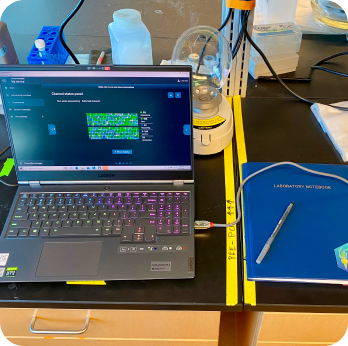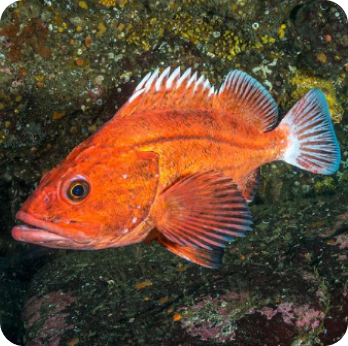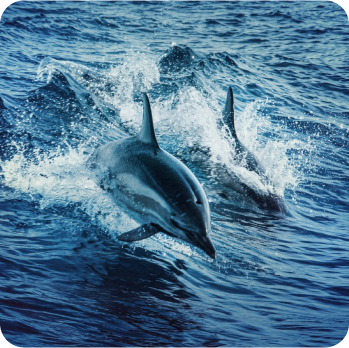Core Research
The eDNA Collaborative conducts a broad range of independent research. Led by Professor Ryan Kelly, a team of postdoctoral scholars, research scientists, laboratory technicians and graduate students are involved in one or more of the projects described below. The Collaborative also works closely with colleagues at other national and international academic institutions, federal and international government agencies, and a variety of NGOs.

Analyzing MinIon data
Innovation for Global Capacity and Accessibility for eDNA Research
The eDNA Collaborative is working to make eDNA techniques more accessible to more people throughout the world. This includes developing more affordable and robust laboratory and field methods for eDNA. Results will be open and accessible in order to increase participation in this emerging technology. These efforts center on addressing challenges common in countries that are historically underrepresented in molecular-ecological research.
The eDNA Collaborative is specifically focusing on reducing the need for expensive and hard-to-obtain instrumentation and reagents, and ensuring the applicability of global standards for eDNA methods and technologies. Projects include developing protocols for rapid, in situ eDNA analysis using the handheld MinIon sequencer, simplifying software required to process sequencing data, and testing alternative laboratory protocols to reduce the need for highly specialized reagents and equipment.
This work is funded by The David & Lucile Packard Foundation and Oceankind

Toward Molecular Management of ESA-Listed Rockfish
Within Puget Sound and the wider Salish Sea, yelloweye rockfish (Sebastes ruberrimus) is listed as threatened under the Endangered Species Act (ESA). Outside of the Sound, on the outer Pacific coast, this species is not listed, but it is overfished under the Magnuson-Stevens Fisheries Conservation and Management Act, and so commercial harvest for the species is closed; it is managed as part of the Pacific Coast Groundfish Fishery Management Plan.
Consequently, distinguishing between ESA-listed and non-listed individuals is of critical management importance; there many parties have political incentives to develop and use faster, more accurate, and cheaper ways of distinguishing and tracking yelloweye populations in the wild. Doing so in a non-invasive, scalable way will both avoid take to imperiled species and provide a path to routine molecular-based management for ESA-listed species within NOAA Fisheries.
This work is funded by Oceankind

MMARINeDNA: Marine Mammal Remote detection via INnovative environmental DNA sampling
MMARINeDNA is a project funded by the US Navy to investigate and advance eDNA science. We aim to understand the transport, persistence, and distribution of eDNA in marine environments from marine mammal targets on multiple spatial, vertical, and temporal scales.
With our partners at NOAA, UCSD, St. Andrews and CalCOFI, the project will theoretically and experimentally characterize eDNA in the marine environment and parametrize models supporting the ability to hindcast source locations using eDNA detections throughout the water column.
This work is funded by ONR